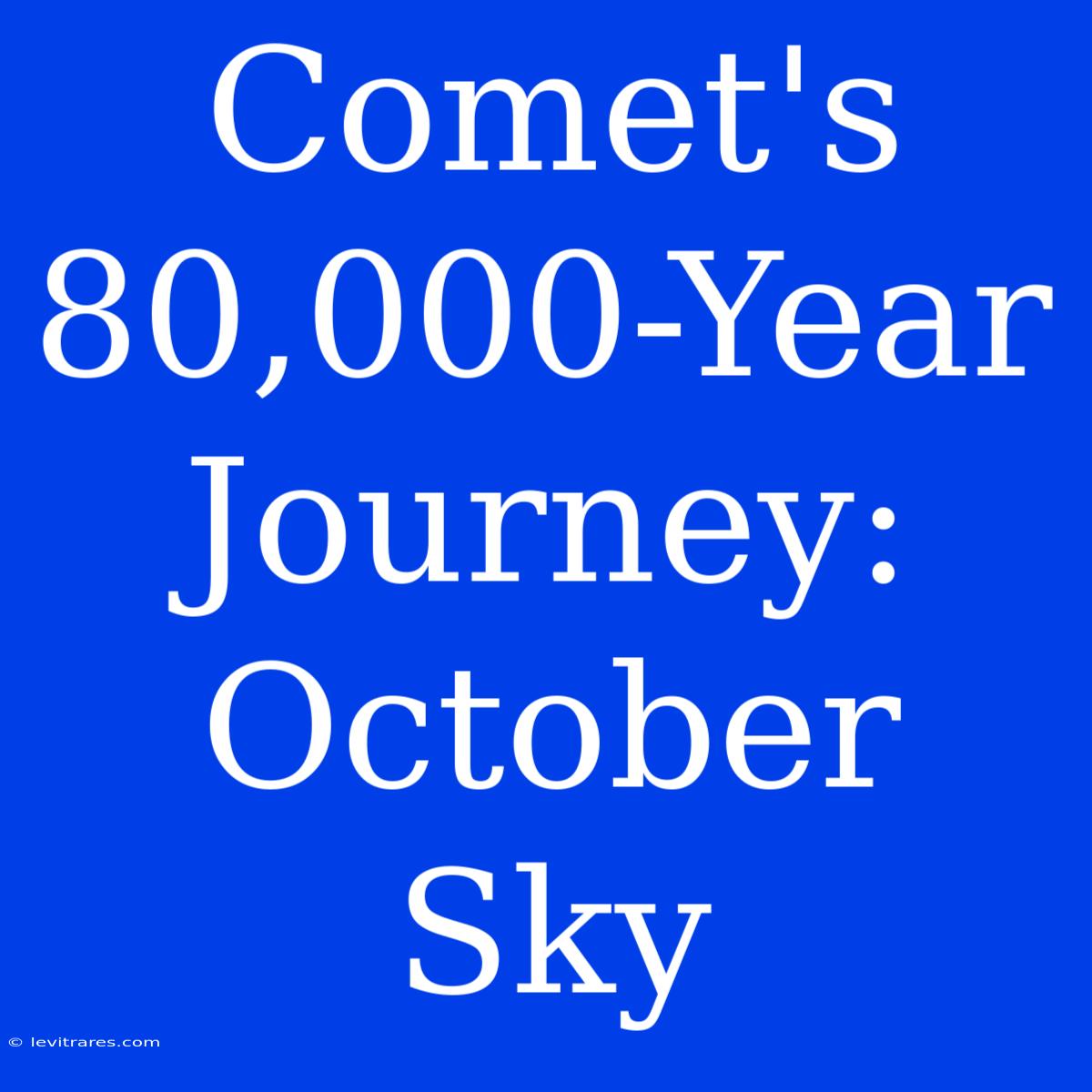Comet's 80,000-Year Journey: A Celestial Spectacle in October's Sky
Have you ever wondered about the celestial bodies that grace our night sky, their stories stretching across millennia? A comet, a celestial wanderer, is set to make its grand appearance this October, marking its first visit to our solar system in an astounding 80,000 years! Editor Note: This comet's return, after such a long absence, is a captivating event for stargazers and astronomers alike.
This incredible journey, a cosmic ballet across eons, provides an opportunity to glimpse the vastness of space and the sheer scale of time. To witness this celestial visitor, a celestial beacon from the past, offers a unique perspective on our place in the cosmos.
Delving into the Comet's Secrets:
To unravel this celestial marvel, we embarked on a comprehensive exploration of the comet's characteristics, its journey, and its significance. We delved into scientific data, astronomical observations, and expert insights to present a comprehensive understanding of this cosmic visitor.
Key Discoveries about the Comet:
| Aspect | Description |
|---|---|
| Origin | Likely originated from the Oort Cloud, a vast sphere of icy bodies |
| Composition | Contains ice, dust, and frozen gases |
| Orbital Period | An astounding 80,000 years |
| Visibility | Expected to be visible to the naked eye in October's night sky |
| Significance | Provides insights into the early solar system and its formation |
The Comet's Journey:
Introduction: Understanding the comet's trajectory is crucial to appreciate its remarkable journey. It's a story of vast distances, immense time, and celestial interactions.
Facets:
- Origin: The comet likely originated from the Oort Cloud, a vast region of icy bodies situated far beyond Pluto.
- Trajectory: Its path stretches across the solar system, passing close to the Sun.
- Gravity's Influence: The Sun's gravity influences the comet's trajectory, pulling it towards the inner solar system.
Summary: The comet's journey is a testament to the vastness of space and the power of celestial mechanics. It's a reminder of the interconnectedness of the solar system and the forces shaping its evolution.
Observing the Comet:
Introduction: Witnessing this celestial spectacle is an opportunity to connect with the cosmos and marvel at the wonders of the universe.
Facets:
- Timing: The comet is expected to be visible in October's night sky.
- Location: Its location in the sky will vary depending on your geographic location.
- Visibility: The comet's brightness will depend on its proximity to the Sun and Earth.
Summary: Observing this comet is a chance to experience a rare celestial event, offering a glimpse into the vastness of space and the beauty of the cosmos.
FAQ
Introduction: Here are some frequently asked questions about the comet's 80,000-year journey.
Questions:
- Q: Is the comet dangerous?
- A: There is no threat of the comet colliding with Earth.
- Q: How often do comets visit Earth?
- A: Comet visits are relatively rare, but some comets have shorter orbital periods.
- Q: Will the comet be visible to the naked eye?
- A: While the comet is expected to be visible to the naked eye, binoculars or telescopes might enhance the viewing experience.
- Q: Where can I find information about the comet's location?
- A: Astronomical websites and apps provide updates on the comet's location and visibility.
- Q: What is the scientific significance of the comet?
- A: The comet offers valuable insights into the early solar system and the formation of planets.
Summary: The comet's visit provides a unique opportunity to learn about the cosmos and the marvels of celestial mechanics.
Tips for Observing the Comet
Introduction: To make the most of this celestial spectacle, consider these tips for observing the comet.
Tips:
- Find a dark location: Light pollution can obscure the comet's visibility.
- Use binoculars or a telescope: These tools can enhance your viewing experience.
- Check online resources: Websites and apps provide updates on the comet's location and visibility.
- Be patient: The comet might not be immediately visible, so allow your eyes to adjust to the darkness.
- Share your experience: Capture the comet's beauty through photographs and share your observations with others.
Summary: Observing this comet is a unique opportunity to connect with the cosmos and marvel at the wonders of the universe.
In Conclusion
The comet's 80,000-year journey is a captivating celestial event that offers a glimpse into the vastness of space and the awe-inspiring beauty of the cosmos. It's a reminder of the interconnectedness of the solar system and the forces shaping its evolution. By observing this celestial wanderer, we can gain a deeper appreciation for our place in the universe and the wonders that await us in the celestial realm.

